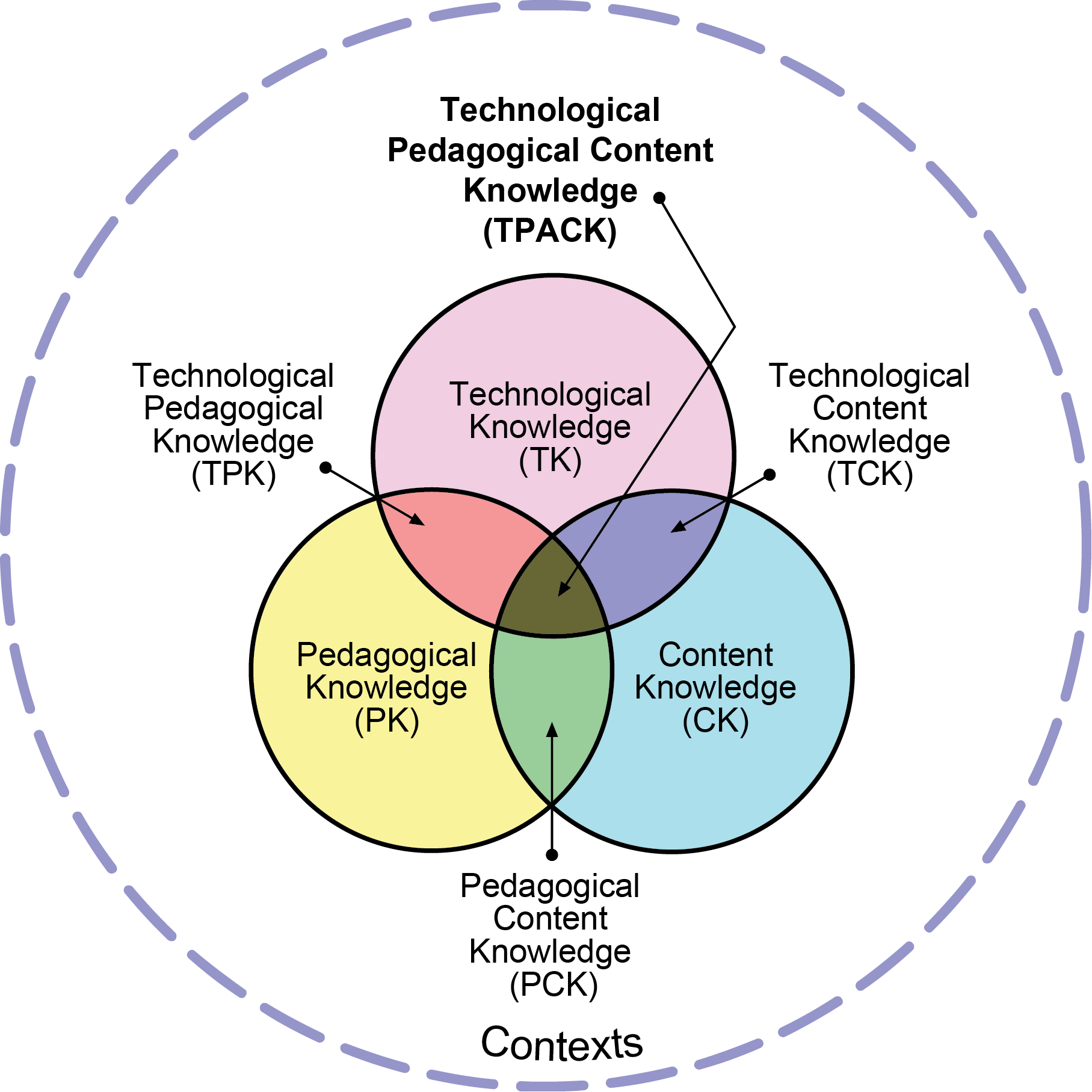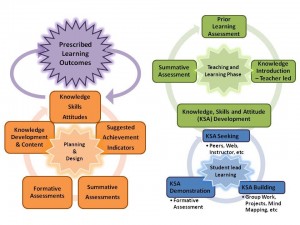OLTD Learning Outcomes:
- Become familiar with common terms, definitions and elements related to online environments
- Understand, design and commit to student success in online learning environments
- Share engagement strategies and tips
- Critically assess and evaluate resources for best practice in online learning
OLTD 509 Critical Challenge Question:
- How can you select emerging technologies which fit your developing philosophy of education?
Evidence to Support the Learning Outcomes and the Challenge Question:
- OLTD 509 Summary of Learning as a Mind Map or 1 page PDF copy
- Disruptive Innovation in Blended Learning: Summary Post
- All About Virtual Labs – Summary Blog Post
Reflection to Support Evidence:
My evidence is a mind map capturing the content and discussions of the seminar I facilitated with Charlene Stewart and Lisa Lewis, as well as the two seminars I attended. The mind map contains quotes from discussions, as well as links to resources shared by the facilitators or participants of the seminars. The mind map was created using the free cloud tool mindmeister, which allows you to view and explore the map from the link provided above. The seminar I helped to facilitate is coloured white, while those I participated in are coloured yellow. I have also included the summary blog posts from the seminars I participated in.
Throughout the duration of this course, I was exposed to a variety of emerging technologies and the teaching strategies associated with them. In all of the seminars, all of the participants shared a variety of perspectives and resources associated with the topic, increasing the depth of the topic exploration. Every seminar allowed me to develop an understanding of the terminologies and considerations around each technology and its use in the classroom. In all seminars, I was given the opportunity to consider the technology in my own context. My summary blog posts discuss the emerging technologies in my own context and from my own philosophy of education.
Although my context is highly specialized and is removed from teaching, I found ways to take away information from all seminars that could potentially have a positive impact on student learning. Being exposed to all of the discussions happening within the public Google+ group throughout the course also helped me to understand the breadth of emerging technologies and appreciate the need to evaluate and contextualize them before “jumping in”. The discussions our cohort had in Google+ highlight how unique each teaching situation and group of learners is, which further underlines how important it is for educators to remain grounded in their philosophy of education.
Understanding and critically evaluating emerging technologies for their use in the classroom is critical. As technology evolves so will the knowledge, skills and attitudes students will need to be successful in their lives. Educators must be able to keep pace with the changes in technology to best meet the needs of the students in their classrooms, and be critical of the technologies in order to protect their students as well. Educators on the “front line” of technology adoption must generally be prepared for resistance, and need to be able to collaborate with supportive professionals to encourage change to happen within their schools.


